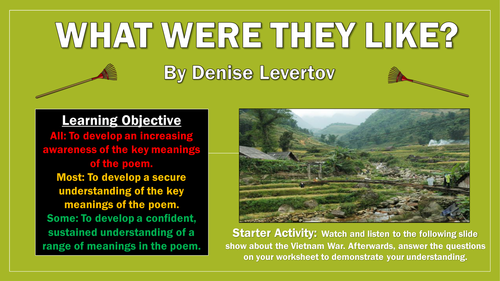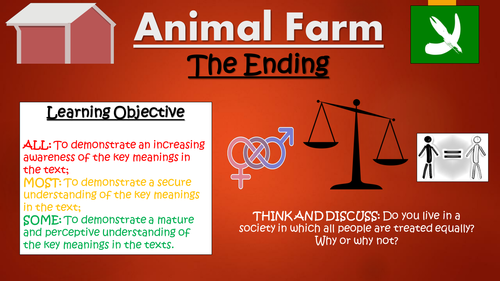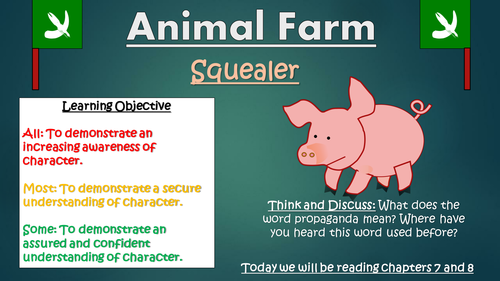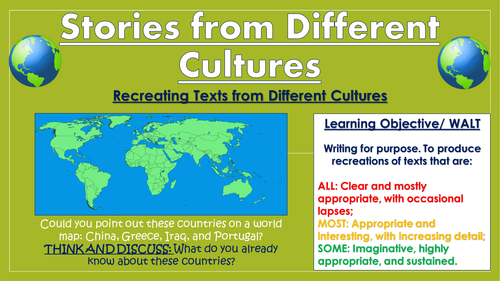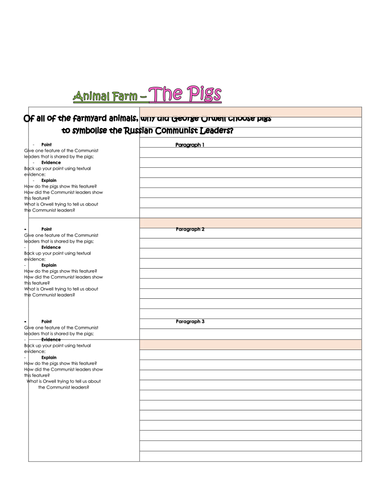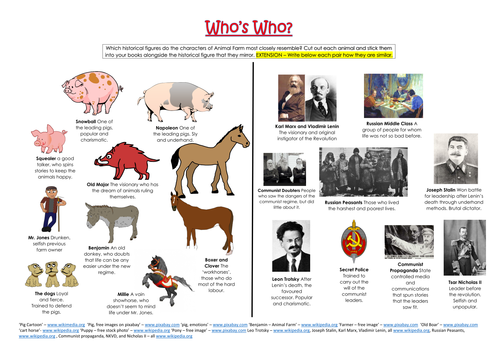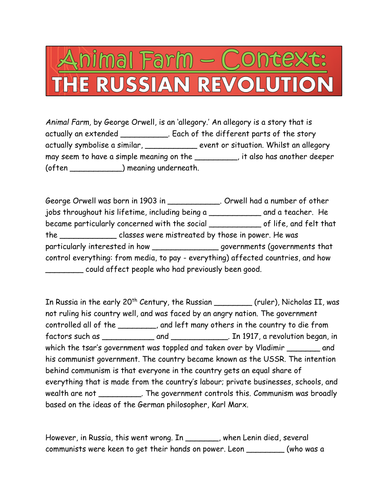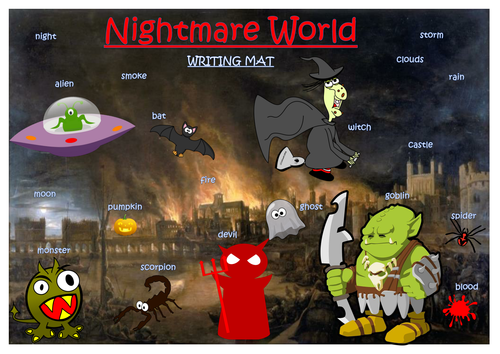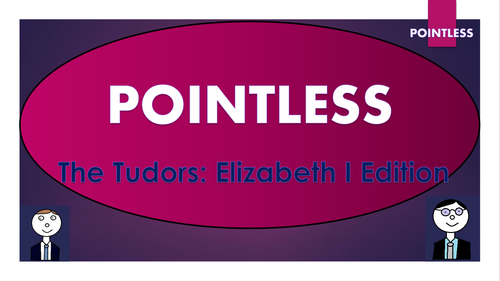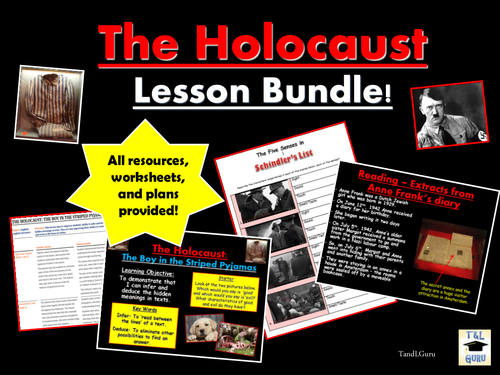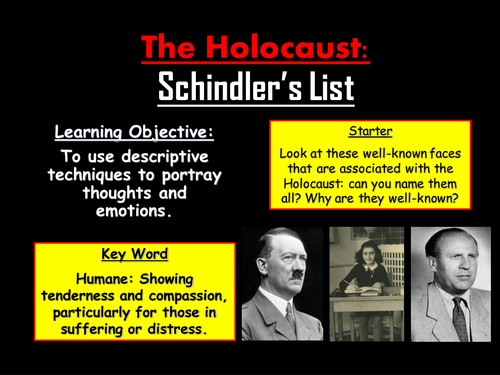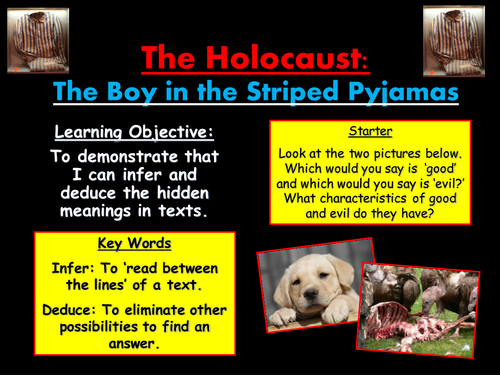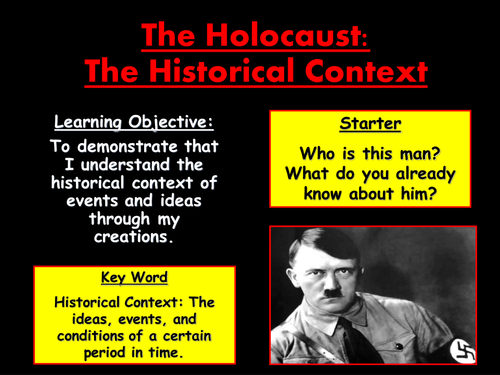
3k+Uploads
1906k+Views
2238k+Downloads
History
Bundle Sale

GCSE Poetry Huge Lesson Bundle!
This huge resource pack contains highly stimulating, detailed, and informative whole-lesson resources for 18 different poems - each of the poems feature on the new GCSE poetry lists for the vast majority of examining boards. In addition to this, the lesson on comparing poems is also included - essential for exam technique! The poems included are largely from the Relationships and War/Conflict poetry lists.
Individually, these resources are worth more than double the price of the bundle, meaning that you can make a considerable saving!
Each lesson employs a wide range of teaching and learning strategies, with a large variety of interesting tasks and ideas. This pack contains a whole-lesson PowerPoint presentation for each poem, in addition to all of the worksheets, task resources, and lesson plans that you need to teach.
Bayonet Charge - Ted Hughes
Before You Were Mine - Carol Ann Duffy
Dulce et Decorum est - Wilfred Owen
In Paris with You - James Fenton
Love's Philosophy - Percy Bysshe Shelley
Mametz Wood - Owen Sheers
Mother, Any Distance - Simon Armitage
Neutral Tones - Thomas Hardy
next to of course god america i - E.E. Cummings
Out of the Blue - Simon Armitage
Ozymandias - Percy Bysshe Shelley
Poppies - Jane Weir
Sonnet 116 - William Shakespeare
The Charge of the Light Brigade - Alfred, Lord Tennyson
The Falling Leaves - Margaret Postgate Cole
War Photographer - Carol Ann Duffy
What Were They Like? - Denise Levertov
When We Two Parted - Lord Byron
Comparing Poems!
All images are licensed for commercial use, and are cited on the final slide of the presentations.

What Were They Like? Denise Levertov - Vietnam War Poem
These resources enable students to build their knowledge of the content, language, and structure of Denise Levertov’s Vietnam War poem ‘What Were They Like?’ In particular, students learn about the historical context of the Vietnam War. They also learn how features of language and structure aid the impact of the poem.
Students learn through a logical and step-by-step learning journey, including:
-Exploring the historical concept of the Vietnam War;
-Understanding key information about Denise Levertov and her life;
-Reading and interpreting the poem;
-Understanding the poem, with a particular emphasis upon the content, language, and structural features;
-Writing an extended analysis piece based upon how Levertov gets across her feelings about war in the poem, through the use of language and structure;
-Peer assessing each other's learning attempts.
Included is:
- Whole lesson PowerPoint - colourful and substantial; (including hyperlink to a reading of the poem)
- Copy of poem;
- Structural devices worksheet
- Analysis template with in-built success criteria for creating well-structured responses;
- Comprehensive lesson plan.
There are also opportunities for group learning, peer assessment, and whole class discussion. This was originally taught to middle-ability year 9/10 groups, but can easily be differentiated for groups of different ages and abilities.
All images are licensed for commercial use, and image rights are listed on the last page of the presentation.
Bundle Sale

Animal Farm Lesson Bundle!
This engaging, varied, and informative scheme of learning is designed to help students gain a valuable understanding of George Orwell's allegorical novella 'Animal Farm.' The lessons enable students to gain a comprehensive understanding of the key features of plot, character, context, and language, in addition to considering the key messages being offered by Orwell.
All of the resources that you need are included in the bundle: informative and engaging whole lesson PowerPoints, worksheets, activities, and lesson plans.
The bundle is made up of a wide-range of interesting and exciting lessons, including:
- The Russian Revolution;
- Old Major's Dream;
- The Rise of the Pigs;
- Dictatorship;
- Squealer;
- The Ending (Orwell's Message)
Stimulating, visual, and easily adaptable, these lessons provide suggested learning objectives and outcomes for students of a wide-range of abilities - The vast majority of tasks are differentiated to allow for different abilities and needs in your classroom. Each lesson loosely follows this logical learning journey to ensure that students learn in bite-size steps:
- Engaging
- Defining/ Understanding
- Identifying/Remembering
- Analysing/ Creating
- Peer or self evaluating.
All of the lessons are interactive, employ a variety of different teaching and learning methods and styles, and are visually-engaging.

Animal Farm: The Ending (Orwell's Message)
These resources enable students to understand and analyse the significance of the ending in George Orwell’s Animal Farm. More precisely, students learn to make clear and accurate interpretations regarding the increasing inequalities on the farm. Furthermore, students analyse how the final events of the novel help Orwell to get his message across to the reader. It is likely that there are enough resources here to be used over at least two hour-long lessons.
Students learn through the following tasks:
- Gauging and collaborating previous knowledge of 'equality' through a discussion-based starter task;
- Reading chapters 9 and 10 with a particular focus on the increasing inequalities between the different animals, and demonstrating their understanding through a related activity sheet;
- Gauging the inequalities between the animals through the design and explanation of an 'equality graph' (template and instructions provided);
- Understanding how the events of the final chapters help Orwell to get his message across to the reader;
- Analysing how the inequalities between the animals are evident through either a character analysis of Boxer or Napoleon (template and success criteria provided);
- Peer assessing their partners' learning attempts.
The following resources are provided:
- Engaging and colourful step-by-step PowerPoint
- Teacher lesson guidance/plan;
- Equality graph template;
- Two analysis template: Boxer and Napoleon;
- Chapters 9 and 10 worksheet (plus teacher answer sheet);
- Copies of Chapters 9 and 10.
All images and videos are licensed for commercial use, and are cited on the final slide of the PowerPoint.

Animal Farm: Squealer (Double Lesson!)
These resources enable students to understand and analyse the character of Squealer in George Orwell’s Animal Farm. More precisely, students learn to make clear and accurate interpretations regarding his role in within the consolidation of Napoleon’s dictatorship. Students also demonstrate their understanding of chapters 7 and 8, with a particular emphasis upon the actions of Squealer. There are easily enough resources here for two lessons.
Students learn through the following tasks:
- Gauging and collaborating previous knowledge of 'propaganda' through a discussion-based starter task;
- Using an interactive, out-of-seat, group activity to build understanding of the features of propaganda;
- Reading chapters 7 and 8 with a particular focus on the character of Squealer, and demonstrating their understanding through a related activity sheet;
- Developing their understanding of Squealer's actions, and finding textual evidence to back this up, through a scaffolded, retrieval activity;
- Using their imaginative and creative skills, in addition to their knowledge of Squealer and propaganda posters, to construct their own propaganda poster for Animal Farm;
- Peer assessing their partners' learning attempts.
The following resources are provided:
- Engaging and colourful step-by-step PowerPoint
- Teacher lesson guidance/plan;
- Squealer's Propaganda worksheet;
- Four propaganda texts for group analysis;
- Template for recording group analysis;
- Chapters 7 and 8 worksheet (plus teacher answer sheet);
- Copies of Chapters 7 and 8.
All images and videos are licensed for commercial use, and are cited on the final slide of the PowerPoint.

Stories from Different Cultures: Recreations (Double-Lesson!)
These interesting and stimulating resources enable students to read and understand a number of texts from different cultures. Students learn about different countries and their social and historical traditions. Students also learn to recreate texts, honing their knowledge of text content, language, and structure choices, whilst simultaneously building their imaginative writing skills. There are easily enough resources here for 2 lessons, at the very least.
The visually engaging, comprehensive PowerPoint presentation guides students through the following learning journey:
- Learning about the cultures of different countries where the short stories originated;
- Reading and understanding the short stories;
- Collaborating in teams in order to analyse the stories in terms of content, language, and structure;
- Understanding the key term 'recreations' and evaluating two recreations of a famous fable;
- Planning and writing their own recreation of one of the texts from different cultures;
- Peer-assessing the recreation attempts of their partner.
Provided in this resource pack is everything that you need to simply print and teach, including:
- Comprehensive PowerPoint presentation;
- Countries fact-sheets
- 4x short stories (The Island of the Sun - China, Narcissus and Echo - Greece, The Little Beggar - Iraq, and The Princess of Riddles - Portugal.)
- Mind-map activity template;
- Recreations planning template;
- Learning objectives to stick in.
All images are licensed for commercial use and are cited on the final slide.

Animal Farm: Dictatorship
These resources enable students to understand and analyse the characteristics of Napoleon’s dictatorship in George Orwell’s Animal Farm. In addition, students learn to make clear and accurate interpretations regarding the events of the chapters 5 and 6, (as Napoleon’s dictatorship begins to emerge) and make appropriate links to individual characters and their allegorical relationship to context. As these chapters signal the end of the animal democracy on the farm, and the start of Napoleon's totalitarian dictatorship, a heavy emphasis throughout these resources is placed upon the character of Napoleon - particularly with regards to his similarities with Joseph Stalin.
There are easily enough resources for two lessons within this pack. Students learn through the following tasks:
- Gauging and collaborating prior knowledge through a discussion-based starter task;
- Gauging their knowledge of key terms such as 'totalitarian' and 'oppression' through a collaborative card-sorting activity;
- Reading chapters 5 and 6 and demonstrating their understanding through an apt and informative worksheet;
- Developing their understanding of the main character of Snowball, and his allegorical equivalent, Joseph Stalin, through a comparison task;
- Analysing the links between Napoleon and Stalin in chapters 5 and 6, using a templated writing frame;
- Peer assessing their partners' learning attempts.
The following resources are provided:
- Engaging and colourful step-by-step PowerPoint;
- Cards for card-sorting activity;
- Teacher lesson guidance/plan;
- Analytical paragraphs worksheet;
- Pictures for comparison task;
- Copies of Chapters 5 and 6.
All images are licensed for commercial use, and are cited on the final slide of the PowerPoint.

Animal Farm: The Rise of the Pigs!
These resources enable students to understand and analyse the rise of the pigs towards power in chapters 3 and 4 of George Orwell’s Animal Farm. More precisely, students learn to make clear and accurate interpretations about the emergence of the various characters as leaders on the farm, with appropriate links to individual characters and their allegorical relationship to context.
Students learn through the following tasks:
- Gauging and collaborating prior knowledge through a discussion-based starter task;
- Reading chapters 3 and 4 and demonstrating their understanding through a related group quiz activity;
- Developing their understanding of the changing nature of characters, and their allegorical ties, through a quotation retrieval mind mapping task;
- Analysing the allegorical nature of the pigs, by further exploring their characteristics in relation to those of the communist Russian leaders of the early 20th century;
- Peer assessing their partners' learning attempts.
The following resources are provided:
- Engaging and colourful step-by-step PowerPoint
- Teacher lesson guidance/plan;
- Analytical paragraphs worksheet;
- Mind-mapping activity template;
- Copies of Chapters 3 and 4.
All images are licensed for commercial use, and are cited on the final slide of the PowerPoint.

Animal Farm: Old Major's Dream and The Revolution!
These resources enable students to understand and analyse the Old Major’s dream and the events of the animal revolution, in the opening two chapters of George Orwell’s Animal Farm. More precisely, students learn to make clear and accurate interpretations about events and characters, with appropriate links to the Orwell’s allegory and relationship to context.
Students learn through the following tasks:
- Gauging and collaborating previous knowledge through a discussion-based starter task;
- Reading the first two chapters and demonstrating their understanding through a related activity sheet;
- Developing their understanding of characters and context through a a making links activity;
- Analysing the allegorical nature of the opening chapters by further exploring the connections between characters and contexts;
- Peer assessing their partners' learning attempts.
The following resources are provided:
- Engaging and colourful step-by-step PowerPoint (includes links for video)
- Teacher lesson guidance/plan;
- Chapters 1 and 2 worksheet;
- Making Links Activity Sheet (1x more difficult, 1 x easier);
- Copies of Chapters 1 and 2.
All images and videos are licensed for commercial use, and are cited on the final slide of the PowerPoint. Note - internet connection is needed if you plan to use the video.

Animal Farm: Context - The Russian Revolution
These resources enable students to understand the context of the Russian Revolution, the predominant subject of Orwell’s allegory within Animal Farm. More precisely, students learn about the key historical events and figures throughout this point in time in Russian history, and begin to comprehend Orwell’s intentions in writing the novella. These resources give students a strong foundation of knowledge which they can then utilise to begin confidently relating the text to its context. There are easily enough resources for at least two lessons within this resource pack.
Students learn through the following tasks:
- Gauging and collaborating previous knowledge through a discussion-based starter task;
- Watching, listening, and demonstrating their understanding of an engaging and informative context video and related activity sheet;
- Developing their understanding through in-depth investigative research into the main leaders of the Russian Revolution;
- Writing a letter from the viewpoint of a member of the Russian working class, who has lived through the various regimes and revolutions.
- Peer assessing their partners’ learning attempts.
The following resources are provided:
- Engaging and colourful step-by-step PowerPoint (includes links for video)
- Teacher lesson guidance/plan;
- Context worksheet;
- Five investigative research templates: Stalin, Lenin, Trotsky, Marx, and The Secret Police.
All images and videos are licensed for commercial use, and are cited on the final slide of the PowerPoint. Note - internet connection is needed for the video activity.
Bundle Sale

World War 1 Poetry Bundle! (All the WWI Lessons, PowerPoints, Resources, and Lesson Plans!)
This engaging, varied, and informative bundle of lessons is designed to help students gain a valuable understanding of a range of WWI poetry. Each of the poems are widely studied, with many being from the Literary Heritage bank, and most being fixtures in examination board anthologies. They all deal with the destructive and horrific nature in different and original ways.
Made up of a wide-range of interesting and exciting lessons, students should complete this scheme having gathered vital skills in: interpreting the significant meanings in poems, understanding the writer's ideas within poems, understanding the social and historical context of World War 1, and analysing features of content, language, and structure.
Stimulating, visual, and easily adaptable, these lessons provide suggested learning objectives and outcomes for students of a wide-range of abilities - The vast majority of tasks are differentiated to allow for different abilities and needs in your classroom. Each lesson loosely follows this logical learning journey to ensure that students learn in bite-size steps:
- Engaging
- Defining/ Understanding
- Identifying/Remembering
- Analysing/ Creating
- Peer or self evaluating.
All of the lessons are interactive, employ a variety of different teaching and learning methods and styles, and are visually-engaging. Resources, worksheets, and lesson plans are all provided for the following poems:
-Bayonet Charge - Ted Hughes
-Mametz Wood - Owen Sheers
-Dulce et Decorum est - Wilfred Owen
-The Falling Leaves - Margaret Postgate Cole
In addition to this, the lesson on comparing poems is also included - essential for exam technique!
Bundle Sale

War/Conflict Poetry Big Lesson Bundle! (Whole lessons - all PowerPoints, resources, and lesson plans included!)
This engaging, varied, and informative scheme of learning is designed to help students gain a valuable understanding of the content, language, and structure features of ten war/conflict poems. In addition to this, the lesson on comparing poems is also included - essential for exam technique! Each of the poems are widely studied, with many being from the Literary Heritage bank, and most being fixtures in examination board anthologies.
Made up of a wide-range of interesting and exciting lessons, students should complete this scheme having gathered vital skills in: interpreting the significant meanings poems, understanding the writer's ideas within poems, understanding the social and historical contexts of the different wars/conflicts, and analysing features of content, language, and structure.
Stimulating, visual, and easily adaptable, these lessons provide suggested learning objectives and outcomes for students of a wide-range of abilities - The vast majority of tasks are differentiated to allow for different abilities and needs in your classroom. Each lesson loosely follows this logical learning journey to ensure that students learn in bite-size steps:
- Engaging
- Defining/ Understanding
- Identifying/Remembering
- Analysing/ Creating
- Peer or self evaluating.
All of the lessons are interactive, employ a variety of different teaching and learning methods and styles, and are visually-engaging. Resources, worksheets, and lesson plans are all provided.

Great Explorers: Christopher Columbus and Ibn Battuta!
Within this varied, interesting, and engaging lesson, students aim to build their knowledge of two of history’s most famous explorers: Christopher Columbus and Ibn Battuta. Students utilise their independent learning skills to research the two travelers, utilise map-reading and geographical skills to improve their knowledge of their journeys, and draw comparisons and contrasts between the two.
The lesson follows a clear and logical learning journey, which requires students to:
- Consider the skills and characteristics required to be a learner, and apply them to real life contexts;
- Share what they already know about the two explorers, and use their curiosity to devise new questions about them;
- Employ their independent learning skills to find out the key events and journeys in the lives of the two explorers;
- Plot the locations of their expeditions on a world map, and consider questions about their journeys based upon what they see;
- Compare and contrast the key features of each explorer, using connectives and key facts;
- Peer assess each others' learning using the simple but appropriate success criteria.
Included in this lesson are:
- Comprehensive, informative, whole-lesson PowerPoint presentation;
- Helpful recording template for the research task;
- World map for tracking their expeditions, with questions as an extension task;
- Helpful and thorough teacher guidance/ lesson plan document, to assist implementation;
- Cut-out copies of the learning objectives, to save time in the lesson.
All images are licensed for commercial use, and are cited on the final slide.

Writing Mats - Imagination Landscapes!
These original writing mats offer a varied and visually engaging way for students to independently increase the depth and breadth of their imaginative writing. Designed on A3, they simply need to printed and given to students before they begin creative writing tasks. They could also be used as colourful word posters to brighten up your classroom and familiarise children with new vocabulary.
The benefits of using these resources as writing mats is twofold: Firstly, the vibrant, wide-ranging, and student-friendly landscapes offer students a wealth of new writing stimuli. Secondly, the simple concrete noun labels save substantial learning time, as the effort that students may have previously exerted deliberating over the spellings of the common nouns is vastly reduced. Instead, students have the time to focus upon the teacher's intended key writing focus areas.
This resource pack aids children in visualising imaginary settings, many of which fit in with Primary/ early Secondary topics. There are 10 different imagination landscapes in this pack:
-Nightmare World
-Ancient Egypt
-Christmas
-Medieval Times
-The Future
-Pirates
-Olympics
-Romans
-The Circus
-Fairy Tales
Every image used in this resource pack is licensed for commercial use, and all are cited on a separate document within the pack.
This pack can either be purchased alone, or as a bundle alongside the 'World Landscapes' writing mats for just 1 pound more.
Sale

Pointless - History Bundle Pack - The Tudors (3 full games included!)
Based on the popular game show 'Pointless', these resources are perfect for use as a starter activity, plenary, or revision tool. Editable, so that you can change to any other topic or change the questions/answers. Containing sound clips, engaging visuals, and suitably challenging questions, these resources are effective at both promoting engagement and enhancing learning.
There are three fully functional and challenging games, including:
- The Tudors (easier)
- Henry VIII (intermediate)
- Elizabeth I (more difficult)
Each game contains four full rounds, which are fun, interesting, and promote deeper thinking in students.
The nature of the game ensures that this resource can challenge students of all levels.
Sale

The Holocaust: Lesson Bundle!
Perfect for as either an English or a Citizenship scheme, this Holocaust scheme aim to build students' key reading and writing skills through the teaching of one of the most important and poignant worldwide historical events: The Holocaust. Using a range of age-appropriate and sensitive Holocaust Literature, this scheme also enables students to explore a range of important social and moral issues.
Engaging, differentiated, and easily adaptable, each of these lessons aims to improve students skills in writing for a key purpose (informing, describing, arguing, analysing) whilst also being incredibly engaging and interesting. Students also read and infer from a number of key extracts from texts, (provided) each with a different and important take on the subject matter. Each lesson follows a logical learning journey to ensure that students learn in bite-size steps:
- Defining;
- Identifying;
- Analysing;
- Creating;
- Peer or self evaluating.
All of the lessons are interactive, employ a variety of different teaching and learning methods and styles, and are visually-engaging. Resources, worksheets, and lesson plans are all provided.
All images are licensed for commercial use and are cited on the last slide of each presentation.

The Holocaust: Schindler's List
This lesson aims to help students to write descriptively, using a range of descriptive writing techniques. Students also learn how to incorporate the five senses into their writing. Furthermore, students explore social and moral issues such as 'swimming against the tide' and 'being different,' through the story of Oskar Schindler.
Informative and engaging, this lesson follows a clear and logical learning journey. Students learn to:
- Define the key term 'humane'
- Understand the story of Oskar Schindler, and consider the social and moral dilemmas that he faced;
- Consider decisions that they have had to make which contrast to popular opinion;
- Remember the five senses, and discuss why they are important to descriptive writing;
- Use the five senses to create descriptive sentences based on scenes from Schindler's List;
- Write a descriptive piece about a difficult decision that they have had to make;
- Peer-assess each others' learning attempts.
Resources included are: A whole-lesson PowerPoint, that guides the teacher and learners throughout the entire lesson, an engaging worksheet, a writing to describe help-sheet, and a teacher guidance sheet.
Note: I'm aware that this is a 15 film - however the clips that I have selected are not amongst the most graphic, and so I feel that the lesson can be used with students younger than 15. You will need a Youtube connection for the links to work.
All images are cited at the end of the PowerPoint presentation, and are licensed for commercial use.

The Holocaust: The Boy in the Striped Pyjamas
This lesson aims to help students to build their skill at inferring and deducing the hidden meanings in texts, whilst also providing students with valuable SMSC messages about the horror of the Holocaust. Students also hone their skills of writing to argue, utilising information that they gain from reading extracts of John Boyne's 'The Boy in the Striped Pyjamas.'
Informative and engaging, this lesson follows a clear and logical learning journey. Students learn to:
- Define key terms related to reading between the lines of a text;
- Consider the concepts of 'good' and 'evil' using the poem 'Vultures.' Use this knowledge to consider the actions of those involved in the Holocaust;
- Read extracts from The Boy in the Striped Pyjamas;
- Answer a range of questions designed to demonstrate students' ability to infer and deduce the hidden meanings in texts;
- Write an argumentative letter from Bruno's Grandma to his father, using a writing to argue help-sheet;
- Peer-assess each others' learning attempts.
Included in this resource pack: A comprehensive, whole-lesson, visually engaging PowerPoint presentation, which guides the teacher and learners through the lesson, a writing to argue help-sheet, a copy of the poem 'Vultures,' extracts from 'The Boy in the Striped Pyjamas' and teacher guidance notes.
All images are cited at the end of the PowerPoint presentation, and are licensed for commercial use.

The Holocaust: Anne Frank's Diary
This lesson aims to help students to build their skill at analysing the language choices in texts, whilst also providing students with valuable SMSC messages about the horror of the Holocaust. Students also hone their skills of writing to analyse, in response to extracts from 'Anne Frank's Diary.'
Informative and engaging, this lesson follows a clear and logical learning journey. Students learn to:
- Define key terms related to the historical context of The Holocaust;
- Remember and understand key information about Anne Frank's experiences, that they learn from an engaging PowerPoint presentation;
- Read extracts from Anne Frank's diary;
- Answer a range of questions to demonstrate their understanding of Anne's diary;
- Analyse the language features used by Anne Frank to create dramatic images in the mind of the reader;
- Peer-assess each others' learning attempts.
Included in this resource pack: A comprehensive, whole-lesson, visually engaging PowerPoint presentation, which guides the teacher and learners through the lesson, a writing to analyse help-sheet, an engaging and helpful worksheet, extracts from 'The Boy in the Striped Pyjamas' and teacher guidance notes.
All images are cited at the end of the PowerPoint presentation, and are licensed for commercial use.

The Holocaust: The Historical Context
This lesson aims to help students understand the historical context of The Holocaust. It is designed to be the first in a series of lessons based upon Holocaust-themed texts, but also makes a fitting introduction to teaching texts such as The Boy in the Striped Pyjamas, Anne Frank's Diary, or simply to be used in a PSHE/form-time lesson to build awareness.
Informative and engaging, this lesson follows a clear and logical learning journey. Students learn to:
- Define key terms related to the historical context of The Holocaust;
- Remember and understand key information about the Holocaust that they learn from an engaging PowerPoint presentation;
- Consider the SMSC questions that arise from such a horrific case of genocide;
- Create a newspaper article that utilises the features of writing to inform, and shares key facts about the Holocaust;
- Peer-assess each others' learning attempts.
Included in this resource pack: A comprehensive, whole-lesson, visually engaging PowerPoint presentation, which guides the teacher and learners through the lesson, a writing to inform help-sheet, a tabloid newspaper template, ' a key terms activity, and teacher guidance notes.
All images are cited at the end of the PowerPoint presentation, and are licensed for commercial use.


